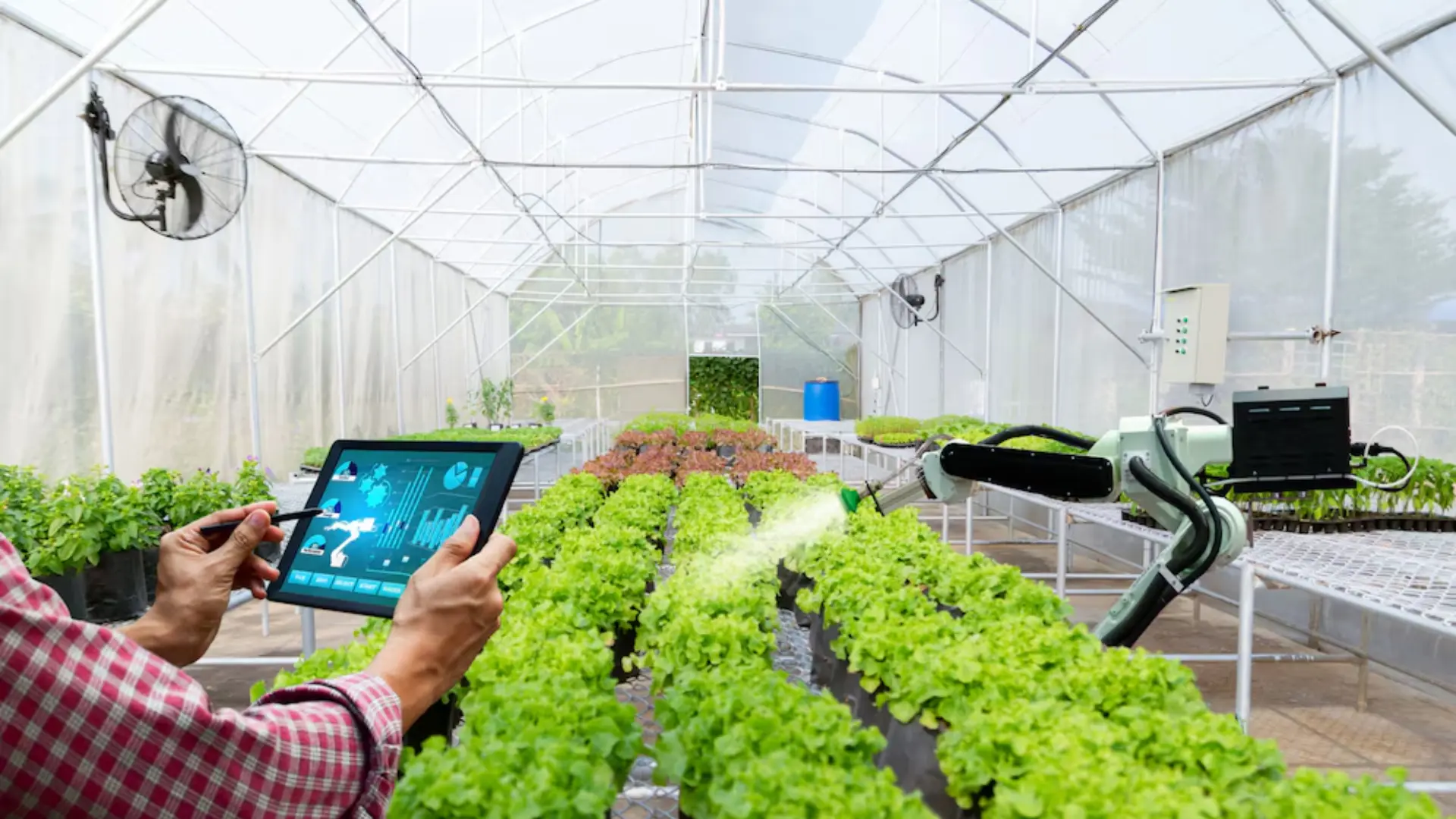
April 29, 2025

With a growing world population and limited arable land, Controlled Environment Agriculture (CEA) is fast becoming a crucial technology to provide the world with a food-related future. CEA enables crop to be produced in tightly controlled environments, entirely independent of outside climate or weather, making it especially consistent, resource-efficient, and capable of continuous supply all year round.
Modular systems and advanced automation technologies are leading this agricultural transformation, changing where, how, and when people grow food. And these breakthroughs are making agriculture more scalable, sustainable, and accessible to all, even in urban settings or disaster-hit areas.
The leading companies in the industry, e.g., AmplifiedAg, Shivvers Manufacturing Inc., and Oasis Grower Solutions, are helping shape the future of the field. They are raising the productivity, versatility, and innovation of the industry with container-based modular farms, fully automated grain handling, and sophisticated propagation systems. This is how they are revolutionizing agricultural solutions, one smart system at a time.
Controlled Environment Agriculture (CEA) is revolutionizing the way people grow food. By employing technology to regulate variables like light, temperature, humidity, and nutrients, CEA has enabled farmers to grow crops with astounding consistency.

Out of all the launches, CEA has one of the most important, which is its efficiency. These systems use less water, reduce pesticide application, and make the most of space. Here, crops can grow throughout the year with predictable yields, regardless of the season or weather.
It is the confluence of several of today’s most pressing global challenges that is driving the rapid growth of CEA. Traditional farming areas are at risk from climate change. Simultaneously, there’s an increasing demand for fresh, local produce.
CEA offers a solution. This enables local food production, reducing the distance food travels, and presents a unique way to address the issue of food insecurity urgently and on a global scale. It isn’t just the future of farming — it is the future of food.
Modular systems are redefining scalability in agriculture. These plug-and-play setups are quick to deploy and easy to expand, which is a plus for both rapidly scaling operations and startups.
A huge enticement is flexibility. Modular design enables growers to scale, whether that’s a single farm unit or a large multi-unit system, to meet demand, without large infrastructure investments.
These systems are particularly effective in nontraditional and urban environments. Rooftops, empty lots, and even parking spaces can become productive farmland. Thanks to modular farming, almost any space can be a growing zone. With food systems changing, modular design is showing its value. It enlivens a world that needs resilience, adaptability, and efficiency, bringing all three.
AmplifiedAg is transforming the way the world grows food. Bringing fresh, safe, nutritious produce within reach anywhere, 365 days a year, in any climate, any space, their state-of-the-art hydroponic container farms are literally changing the game.
Each farm is housed inside a repurposed shipping container and is equipped with a fully integrated, controlled environment. As its name suggests, these systems use LED lighting, hydroponic channels, and precise environmental controls to improve plant health and provide consistent yields.
AmplifiedAg farms can be installed in cities, rural areas, and disaster zones, featuring:
| Feature | Benefit |
|---|---|
| Compact footprint | Perfect for urban and remote locations |
| Rapid deployment | Prepared to scale in weeks |
| Minimal logistics | Significantly reduces food miles/waste |
| Hyper-local food production | Strengthens local communities and economies |
They help their partners in every way possible with:
Backed by actual farmers and engineers, AmplifiedAg isn’t just selling equipment—they’re providing a full-fledged, scalable farming solution. From farming to food, they’re growing food for a growing world.
As the expectations for agriculture grow, so does the need for smarter, speedier postharvest solutions. Automation is coming up to the plate, working through previously manual, labor-intensive processes.
Automation increases efficiency, decreases manual labor, labor costs, and improves product uniformity, from trimming and sorting to drying and storage. Postharvest automation removes guesswork that leads to the growth of the best crops and higher yields for growers and consumers alike.
The real game-changer? Digital controls and real-time data. Digital control and data in real time. Thanks to sensors, smart controllers, and cloud-connected platforms, growers can monitor and adjust environmental conditions, drying times, and storage parameters with relative ease.
These technologies deliver:
Automation of the postharvest process is more than just tolerating modern technologies; this proactive approach will build a more responsive, resilient, and profitable agricultural future.
Shivvers Manufacturing Inc. is revolutionizing postharvest grain handling. Their drying and storage systems, which are totally automatic, combine innovation with reliability through extensive real-world experience, allowing farmers to take full control of their harvest.
Shivvers Manufacturing Inc. has been the industry leader for many years when it comes to grain drying and post-harvest processing. Their Counter-Flow Drying Systems deliver precise energy efficiency, enabling grain bins to function as adaptive drying centers. These systems can operate 24 hours a day with limited supervision, processing between 6,000 and over 50,000 bushels daily.
Shivvers Solution focuses on efficiency, quality, and ease of use. Their continuous-flow drying systems maximize moisture content, safeguard grain quality, and greatly reduce labor.
Key benefits include:
With Shivvers’ technology, the postharvest process is a high-tech, low-stress operation. It’s automation that often saves time, effort, and money, but more than that, it’s peace of mind, one harvest at a time.
Propagation is the cornerstone of healthy, high-yield crops in Controlled Environment Agriculture (CEA). Whether you’re growing leafy greens or herbs, the beginning of a plant’s life can set the pace on the way to success.
Propagation is about providing the right conditions for seeds to germinate and develop into healthy, disease-resistant seedlings. The best starts lead to a greater likelihood of achieving maximum crop yield and uniform quality.
Some of the most recent trends in hydroponics, substrate innovation, and seedlings are revolutionizing the way people grow. Hydroponic systems deliver nutrients directly to plant roots, and innovative substrates enhance water retention, aeration, and root health.
From pests, diseases, pathogens, and environmental stressors, growers may receive a smoother, more productive growing cycle, given that proper propagation techniques are employed. Propagation is not just about growing seeds; it’s about creating the conditions for long-term splendor.
Oasis Grower Solutions engineers foam substrates and also offers innovative hydroponic solutions. These innovations allow for the carrying out of agricultural practices with more sustainability and profitability. Oasis Rootcubes, RhizoPlug, and Horticubes engineered foam technologies are optimized to support ideal root growth, air exchange, and nutrient uptake — giving young plants the best head start.
Here are some ways Oasis stands apart: consistency, sustainability, and global reach. Ranging from preharvest wetting agents to ethylene-locking postharvest products, they provide growers with the tools to help maintain the health and market readiness of their crops from the start to the end of the production cycle.
The quality of the substrate in which a plant grows, as well as nutritional inputs and post-harvest handling, can be all-important to a crop in controlled environment agriculture. But with high-quality media, you have their training, and through a personal service, you are never alone.
Sustainability — in energy, water, and even land management — is at the heart of modern agriculture. These kinds of practices are helping to reduce farms’ environmental footprint, even while they ramp up their production.
This movement is a large part of building modular farms, small areas that make it easier to farm in controlled environments and use those resources more efficiently on a smaller, more local scale. These farms draw far less water than traditional agriculture methods, and make better use of the land and of resources by growing food.
Another driver here is automation, which can lead to more efficient use of energy and resources. These are sustainable substrates upon which crops can be raised with no adverse effect on the environment and provide a clean alternative to more traditional substrates (growing mediums).
By adopting these advances, growers are nourishing the planet — and they’re doing so in ways that will safeguard it for generations to come.
Modular agriculture offers a solid and attractive future, but there are still barriers to cross. On smaller farms or in less-developed parts of the world, there may be high infrastructure fixed costs or limited levels of tech literacy, which can be prohibitive to adoption.
The base capital to design and deploy modular systems can be a fair bit upfront, though. But as the need for sustainable farming practices grows, such high-powered technologies are slowly becoming more affordable and accessible.

In an effort to try to plug these gaps, companies are stepping up to provide one-stop support. This ensures farmers are able to effectively operate their modular systems, including training, site installation, and continued technical support.
Over time, as technology becomes more mainstream and costs trend downwards, modularised agriculture will fundamentally change the landscape of sustainable food production globally. They also use vertical farming combined with high technology indoor farming techniques, revolutionizing sustainable agriculture and establishing a better sustainable food system that provides local fresh produce all year-round with minimal environmental impact and a decrease in transportation costs, revolutionizing food production on an international level.
Q1: Why are modular farming systems perfect for urban or remote areas?
Modular systems are efficient, scalable, and infrastructure-light. They can be installed on rooftops, in parking lots, or in remote areas, making them perfect for growing fresh food close to where it is consumed.
Q2: How does automating improve the process afterwards?
Automation minimizes human effort, standardizes product quality, and enhances efficiency. Real-time monitoring and digital controls enable growers to maximize drying, storage, and quality assurance without requiring constant supervision.
Q3: Why is propagation so important in Controlled Environment Agriculture? Propagation lays the groundwork for crop success. Plant health coming from optimally grown seedlings under controlled conditions leads to more vigorous plants and ultimately higher yields and better quality along the cultivation cycle.
As the world enters an era of agricultural challenges that are expected to grow and evolve, modular systems and automation are proving to be powerful tools in re-imagining what can be done with sustainably produced food. Going from early-stage propagation through postharvest precision, companies like AmplifiedAg, Shivvers Manufacturing Inc., and Oasis Grower Solutions are making Controlled Environment Agriculture more efficient, sustainable, and accessible than ever.
People who adopted technology and rethought the farm from first principles aren’t just meeting growing global demand; they’re growing a smarter, greener future for generations.
Disclaimer: This material is for informational purposes only and should not be relied on for legal, medical, financial, or other professional advice.
Sources:
College of Agricultural and Environmental Sciences - Controlled Environment Agriculture
ResearchGate - Development of modular smart farm system